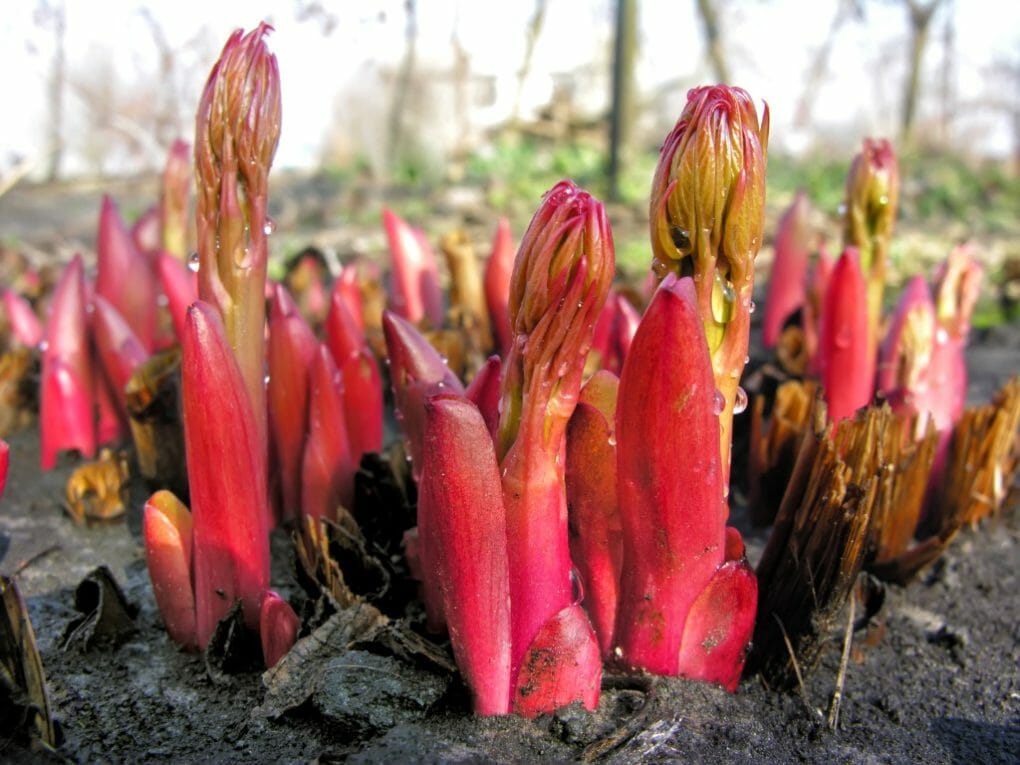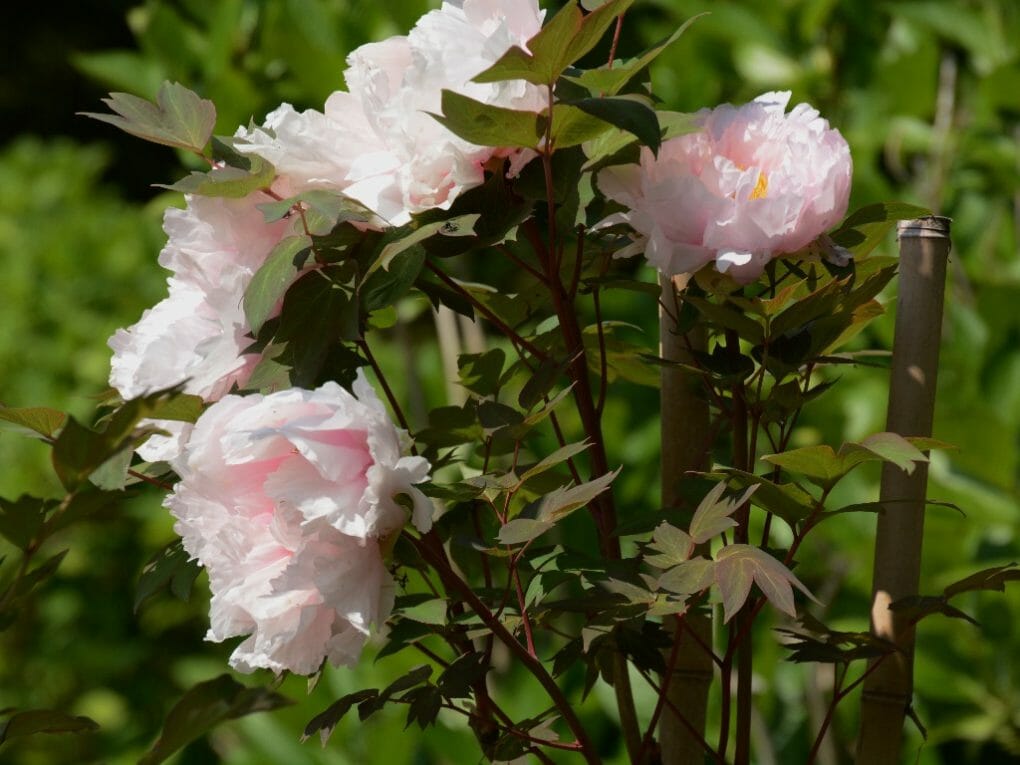Do Peony Like Acidic Soil? What pH Level Should the Soil Have for Peonies?

Peonies can vary quite a bit in their preferences for soil pH. However, peonies generally prefer acidic soils, so if your soil tends to be on the alkaline side, you may want to consider adding lime or other acidifying agents to reduce the pH level. Find out more here, and keep reading!
Table of Contents
What pH Level Should the Soil Have for Peonies?
Peonies are unique and can be divided into the following three categories:
There are three types of peonies: herbaceous peonies, also known as perennial peonies, tree peonies, also known as shrub peonies; and intersectional peonies.
Herbaceous and Itoh’s peony has a general preference for soil that is slightly acidic, with a pH ranging anywhere from 6.5 to 7. On the other hand, tree peonies thrive in slightly more alkaline environments and do best in pH levels ranging from 7 to 7.5.
How to Get Your pH Level Just Right
When preparing a soil mixture, one of the most crucial things to do is ensure that the pH is correct. Consider things from this perspective. Phosphorus is essential to the growth of your peony.
However, your plant will have difficulty absorbing this essential vitamin if the environment is extremely alkaline. It is easy to understand how this may turn against you if you leave it in a soil mixture with a pH of 8.
Before you add the planting soil to your peony, you must first determine the soil’s pH level. Obtaining a pH testing kit from a gardening supply store is the method that is not only the most convenient but also the most economical.
You won’t get very far with litmus paper because all it can do is tell you whether the soil is acidic or alkaline. You cannot rely on the readings that it provides. This was a lesson that I had to learn the hard way.
If the pH of your soil is too low, you can raise it by adding lime, calcium hydroxide, wood ash, or one of the many other alkaline components you have around the house.
It is recommended to only use a small amount at a time before doing a pH test on the soil. Consider that the final pH reading won’t be available for a few days after the test. Taking it gently and easily is the key to modifying the soil.
Additional home cures are available if the peony’s soil has a higher alkaline content than it requires. Adding materials with an acidic pH level to the soil is all required.
Compost, vinegar, and used coffee grounds are some examples of these. You should only use a minimal amount each time, just like you should do with alkaline materials.
After some time has passed, the pH will be measured. If you add too much, you risk making the soil overly acidic, requiring you to begin the process all over again using alternative ingredients.
Ideal Type of Soil
Peonies are most successful when grown in sandy and friable soil, which means they can be easily broken up into smaller pieces. According to The Peony Garden Nichols Arboretum, located at the University of Michigan, clay soil is not a suitable choice since it tends to produce enormous clumps that can exacerbate root problems and trap water. Clay soil also tends to form large clumps. To improve the drainage and friability of your soil, mix one to two cups of perlite into the soil surrounding each plant. This is especially helpful if your soil contains a low to moderate level of clay.
Peonies favor soil that has a high concentration of organic content. If you put compost into the soil that is used to backfill each planting hole, you may raise the organic content of your soil and boost its nutritional value. This will allow you to grow healthier plants. The additional benefits of compost include aerating the soil and enhancing its drainage capacity.
Proper Soil pH

Peonies thrive in soil that ranges from slightly alkaline to neutral, with a pH between 6 and 7. Utilizing a soil test kit that can be purchased from a garden center or obtaining a soil analysis from a testing center in the fall is the best way to determine whether or not the pH of your soil is appropriate for planting peonies. Doing either of these things in the fall gives you time to adjust the pH of your soil before planting peonies the following spring.
According to Clemson Cooperative Extension, if the soil is too acidic, a pH below 6, you can boost its pH by adding ground limestone and working it deeply into the soil when it is damp, making sure to work it into the top 7 inches of soil at the very least. If the pH of your soil is higher than 7, which indicates that it is excessively alkaline, you can lower it by adding aluminum sulfate or sulfur to make it more acidic. The amount of lime or sulfur that needs to be added is mostly determined by the kind of soil and the initial pH of the soil. A soil test report will typically make recommendations for the application amounts of either amendment, taking into account the kind of soil and the soil’s pH level at the testing time.
Other Cottage Garden Plants Amendments
Feeding peonies in the early spring, when the new growth is around two to three inches high, is beneficial for the plant. They do best when provided with a low-nitrogen fertilizer, such as one with a formula of 5-10-10, and when that fertilizer. Put the soil around the base of each plant at a rate of one-half cup for each plant. Halfway through the growing season, giving the plants a second feeding in the same way as the first can assist in maintaining healthy plant growth.
When adding fertilizer to the peony, you should be careful not to disrupt the plant’s roots because they are delicate and easily harmed. When done in the spring, applying a layer of organic mulch with a thickness of two to three inches can assist in the preservation of soil moisture and, as the mulch decomposes over time, can gradually provide organic material to the soil.
Additional Peonies Soil Requirements
Peonies require only typical amounts of water to thrive. If, on the other hand, the soil becomes parched during the hot summer months, the plants will gain the most benefit from consistent deep watering during these times.
A robust stake or ring-shaped support will help protect peony flowers from drooping during the spring rains and prevent the stems from breaking when there is severe wind. Peony flower heads are enormous and heavy, so this support is necessary.
Removing wasted blooms from plants is a practice known as deadheading. One can limit the development of new seeds, which helps preserve the plant’s nutritional reserves and supports flowering in the following season.
Choosing the Right Location and Getting Ready
It is essential to begin a new planting with healthy nursery stock and locate it in an area that will allow it to thrive. This is because all types of peonies have the potential to survive for an extremely long time while requiring only a moderate amount of maintenance.
All varieties of peonies require the following:
A nutrient-rich, well-drained soil that ranges from slightly acidic to neutral in pH, between 6.5-7. Peonies should never be planted in areas prone to flooding or with water that remains stagnant for extended periods.
When exposed to direct sunlight, peonies of any variety will flourish. Herbaceous and intersectional peonies require a minimum of six hours of sun exposure each day to achieve optimal growth. The disadvantage of planting tree peonies in full light is that the flowers may wither and die rapidly. However, the plant itself will thrive in the environment.
Tree Peonies

Tree peonies will also grow and flower well in places with spotty sunshine or eastern exposure, which receives morning sun and afternoon shadow. Both of these conditions are ideal for the plant. The plant’s growth will be slightly slower than in full light, but the flowers will remain longer.
Even if you garden in an area that has heavy clay soils, depleted soils, or highly acidic (low pH) soils, do not worry; you will still be able to grow lovely peonies as long as you follow the appropriate procedures to amend the soil in the new peony planting area. For the most part, this means bringing the pH of the soil up to the appropriate level, creating looser, more friable soil in areas of heavy clay, and adding suitable organic material to deficient soils to supply the peony with adequate food throughout its lifetime. If you put in a little effort now, you will be rewarded with years of gorgeous flowers. We have included a video and an illustrated step-by-step guide below in the hopes that they may assist you in developing an area suitable for planting peonies. If you have any inquiries, please contact us at.
